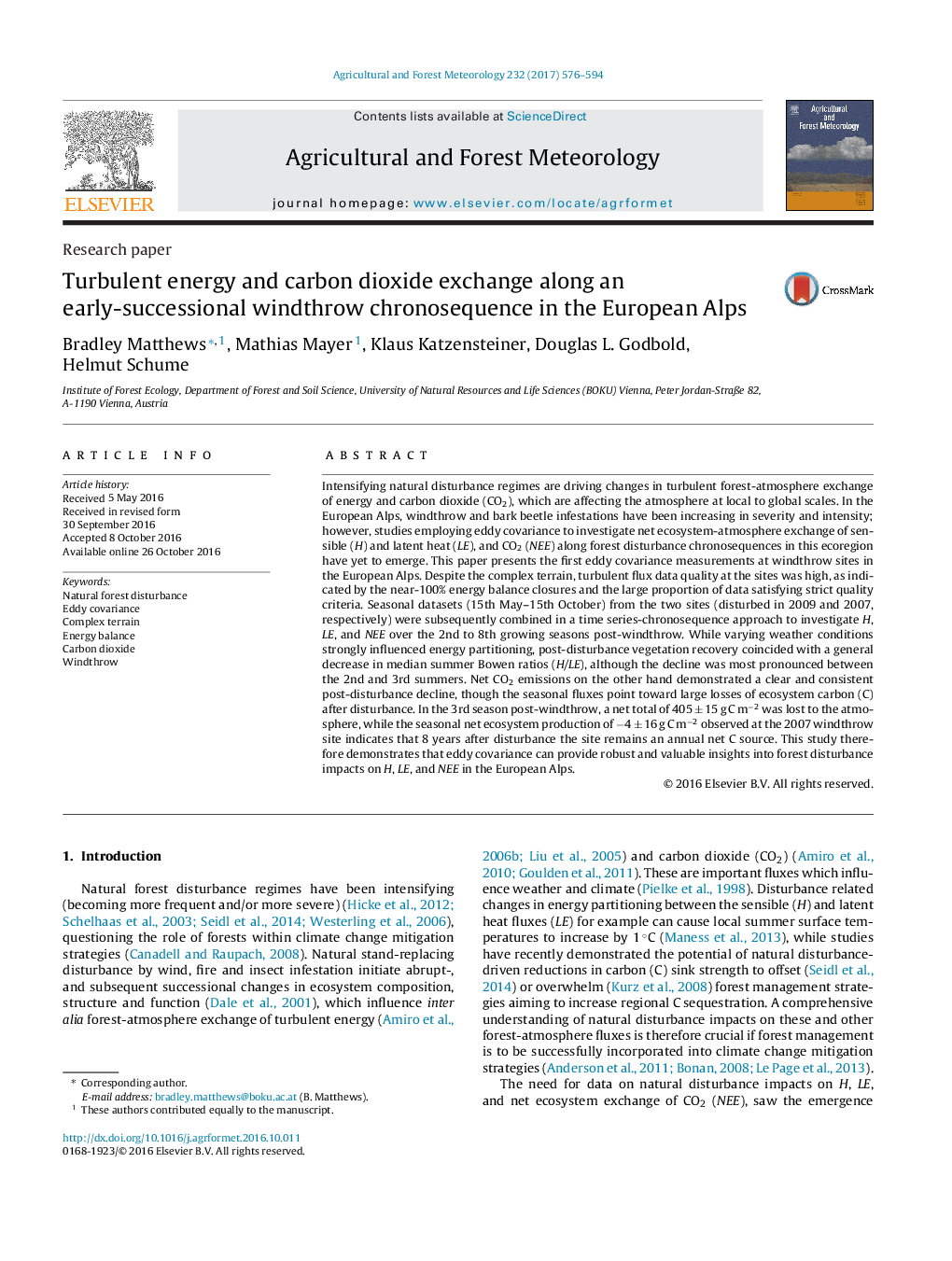| Article ID | Journal | Published Year | Pages | File Type |
|---|---|---|---|---|
| 6458152 | Agricultural and Forest Meteorology | 2017 | 19 Pages |
â¢Robust eddy flux measurements along a windthrow chronosequence in complex terrain.â¢High levels of turbulent flux data retention after stringent quality control.â¢Nearâfull energy balance closure at both windthrow sites.â¢Large net C losses and high summer Bowen ratios initially after disturbance.â¢Site disturbed in 2007 likely a net C source in 8th year after windthrow.
Intensifying natural disturbance regimes are driving changes in turbulent forestâatmosphere exchange of energy and carbon dioxide (CO2), which are affecting the atmosphere at local to global scales. In the European Alps, windthrow and bark beetle infestations have been increasing in severity and intensity; however, studies employing eddy covariance to investigate net ecosystemâatmosphere exchange of sensible (H) and latent heat (LE), and CO2 (NEE) along forest disturbance chronosequences in this ecoregion have yet to emerge. This paper presents the first eddy covariance measurements at windthrow sites in the European Alps. Despite the complex terrain, turbulent flux data quality at the sites was high, as indicated by the nearâ100% energy balance closures and the large proportion of data satisfying strict quality criteria. Seasonal datasets (15th May-15th October) from the two sites (disturbed in 2009 and 2007, respectively) were subsequently combined in a time seriesâchronosequence approach to investigate H, LE, and NEE over the 2nd to 8th growing seasons postâwindthrow. While varying weather conditions strongly influenced energy partitioning, post-disturbance vegetation recovery coincided with a general decrease in median summer Bowen ratios (H/LE), although the decline was most pronounced between the 2nd and 3rd summers. Net CO2 emissions on the other hand demonstrated a clear and consistent postâdisturbance decline, though the seasonal fluxes point toward large losses of ecosystem carbon (C) after disturbance. In the 3rd season postâwindthrow, a net total of 405 ± 15 g C mâ2 was lost to the atmosphere, while the seasonal net ecosystem production of â4 ± 16 g C mâ2 observed at the 2007 windthrow site indicates that 8 years after disturbance the site remains an annual net C source. This study therefore demonstrates that eddy covariance can provide robust and valuable insights into forest disturbance impacts on H, LE, and NEE in the European Alps.
